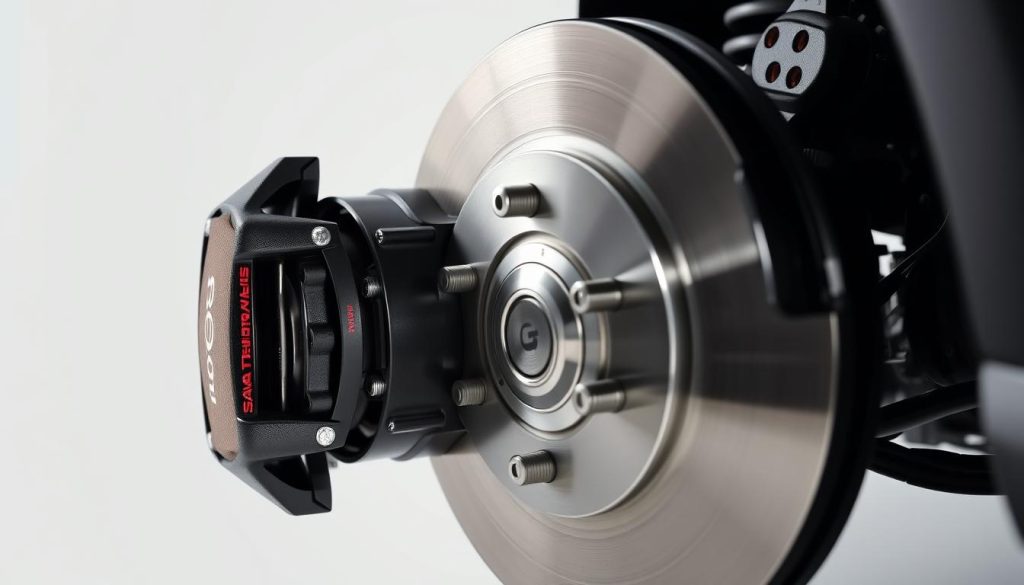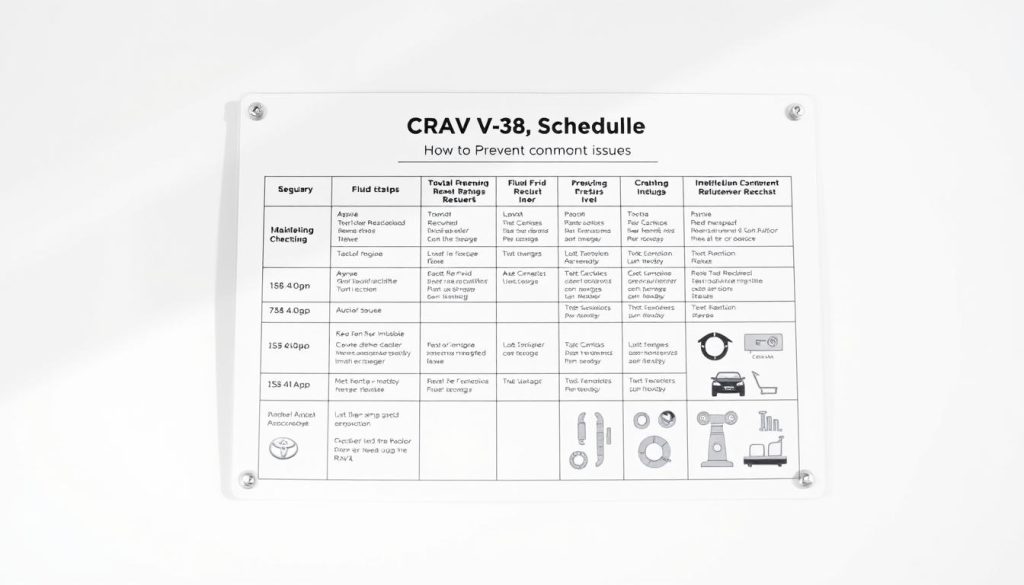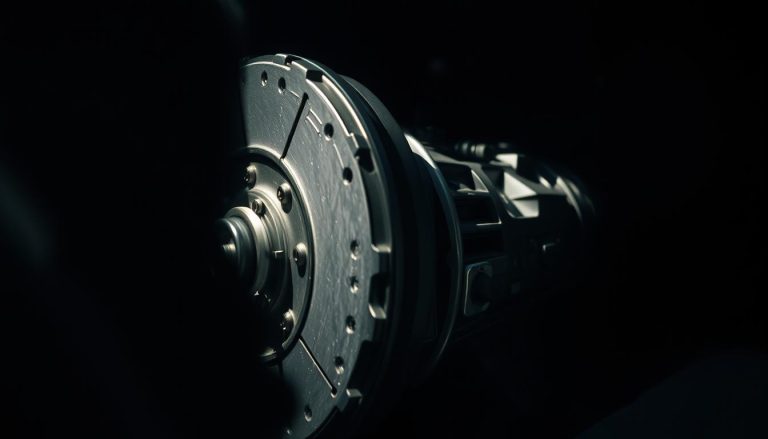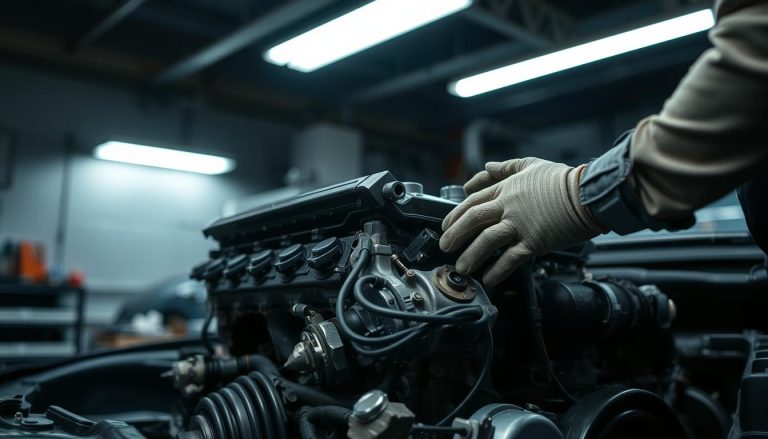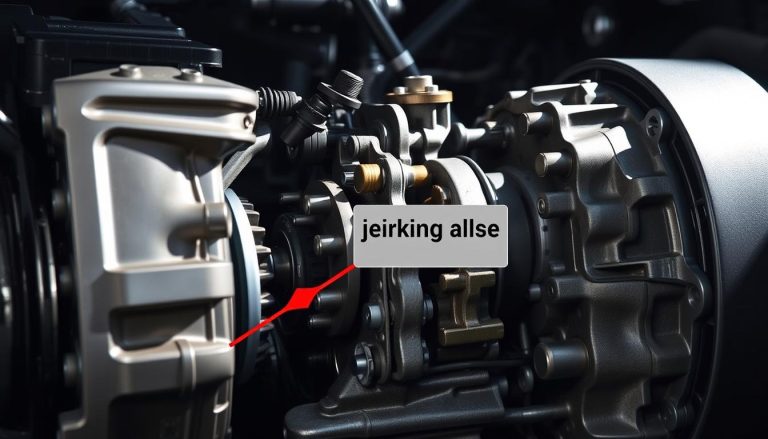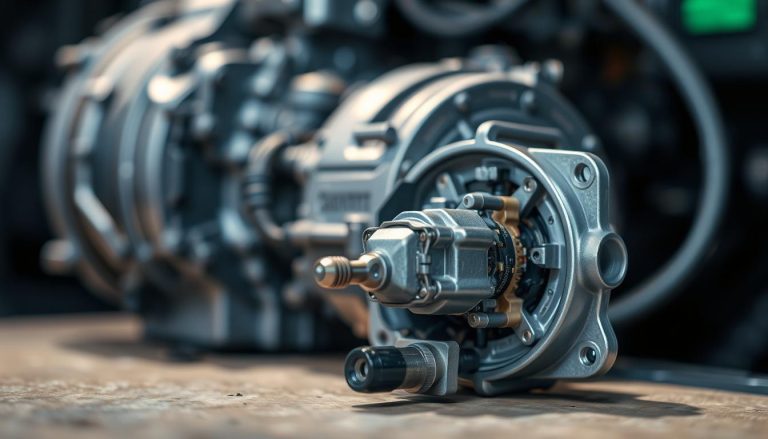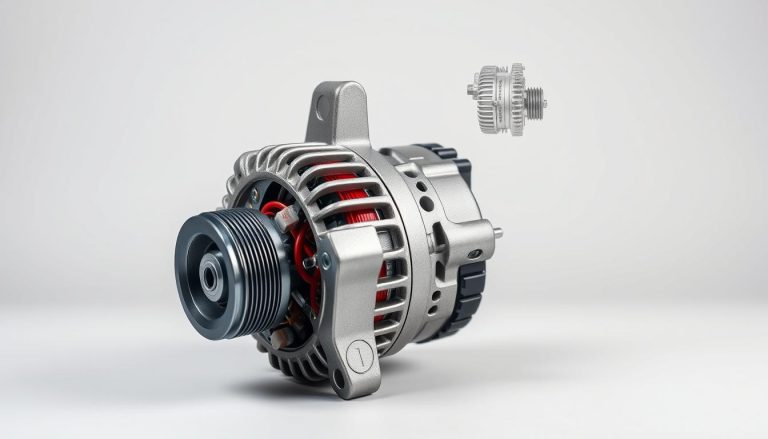Toyota RAV4 Problems: Top Issues and Complaints
The Toyota RAV4 is a top choice for compact SUVs in America. It sold over 1.0 million units worldwide in 2022. The U.S. and Canada bought 43% of these vehicles.
Even the most reliable cars can face common issues over time. Knowing about RAV4 reliability concerns early can save money and avoid trouble.
This guide looks at the most common Toyota SUV problems across model years. It’s useful whether you’re buying a used car or already own one. We’ll talk about engine troubles, electrical issues, and how to prevent them.
Key Takeaways
- The RAV4 remains highly reliable despite some common issues across model years
- Early recognition of problems can prevent expensive repairs
- Regular maintenance greatly lowers the chance of big problems
- Engine and transmission issues are often reported
- Electrical system problems affect some model years more
- Knowing about warranty coverage helps fix issues quickly
Understanding Your Toyota RAV4’s Warning Signs
Your Toyota RAV4 has warning signs that can prevent expensive repairs. Knowing how to read these signs is key. It can mean the difference between a small fix and a big problem. Early problem detection helps protect your investment and keeps you safe.
The 2019 RAV4 had seven service recalls. These included power-steering failure, fuel pump issues, and suspension problems. This shows why it’s so important to spot RAV4 warning signs early.
How to Recognize Problem Symptoms Early
Your RAV4 tells you about problems through specific signs. Dashboard warning lights are the most obvious. But automotive symptoms go beyond these lights.
Listen for odd noises while driving. Grinding sounds mean brake issues, while squealing points to belt problems. If your engine feels rough or doesn’t accelerate well, it might be mechanical trouble.
Don’t ignore physical signs either. Look for fluid leaks, unusual tire wear, and changes in steering. These signs often show up before the dashboard lights do.
Creating a Problem Documentation System
Vehicle diagnostics work better with a detailed log. Keep a simple record of when symptoms appear, driving conditions, and how bad they are.
Write down the exact situation for each problem. Note if it happens during cold starts, highway driving, or city traffic. Also, record the mileage and date for each issue.
This method helps with DIY fixes and professional diagnoses. Mechanics love detailed histories, which can lead to quicker and more accurate repairs. Early problem detection and good documentation save time and money. They also keep your RAV4 running well for years.
How to Identify Engine-Related Issues
Checking your engine regularly is key to avoiding big repair costs. RAV4 engine problems often start small but can grow big if not caught early. Models from 2006-2012 have unique issues that owners should know about.
The 2AZ FE engine in these cars has some common problems. Piston ring design flaws lead to ongoing maintenance needs. By following a step-by-step diagnostic plan, you can spot issues early and make smart repair choices.
Check for Oil Consumption Problems
Begin by checking your oil levels every week. Oil consumption issues are common in 2006-2008 RAV4s with the 2.4-liter engine. Always check your dipstick and note any changes.
Normal oil use should be no more than one quart between oil changes. If you’re adding oil often, it might mean the piston rings aren’t sealing right. Keep track of oil additions, including dates and amounts.
Look out for blue smoke from the exhaust when starting or speeding up. This means oil is burning in the engine. Fix these signs quickly to avoid engine damage.
Listen for Engine Knock and Timing Issues
Engine knock sounds like marbles inside the engine. It happens when fuel ignites too soon, causing pressure waves. Use premium fuel if you hear knocking during acceleration.
Timing chain problems make different noises. Listen for rattling at cold starts that goes away when warmed up. These sounds often mean stretched timing chains or worn tensioners.
Also, watch for rough idling or hesitation when speeding up. These signs point to timing problems that need a pro’s look.
Inspect Catalytic Converter Performance
Catalytic converter problems hurt fuel economy and cause emissions tests to fail. Keep an eye on fuel use for sudden drops. A failing converter often turns on the check engine light.
Test how well your car accelerates regularly. Slow acceleration and poor fuel economy mean converter trouble. A pro can test the converter’s efficiency.
| Engine Problem | Warning Signs | Affected Models | Urgency Level |
|---|---|---|---|
| Oil Consumption | Low oil levels, blue smoke | 2006-2008 RAV4 | High |
| Engine Knock | Rattling sounds, poor performance | All years | Medium |
| Timing Issues | Cold start noise, rough idle | 2009-2012 RAV4 | Medium |
| Catalytic Converter | Poor fuel economy, check engine light | All years | Low |
Diagnosing Transmission Problems Step-by-Step
Finding transmission issues in your RAV4 early can save you thousands and keep you safe on the road. RAV4 transmission problems have been common in certain years, like 2001-2003 and some 2019 models. Knowing how to check your transmission can help you spot issues before they get worse.
The 2002 RAV4 was a big problem year for transmission issues. Many owners faced jerking, hesitation, and even complete failure. Recently, some 2019 RAV4 owners noticed it lurches when starting from slow speeds.
Diagnosing your transmission involves three main steps: checking the CVT, analyzing shifting, and looking at the fluid. Each step gives you important info about your transmission’s health and tells you if it needs fixing right away.
Testing CVT Function
CVT transmission issues need special testing methods. Start by watching how your car accelerates during normal driving. The CVT should smoothly deliver power without sudden jumps or delays.
Try accelerating slowly from a stop. Listen for strange noises like whining, grinding, or rattling. Also, watch the engine RPM – if it’s all over the place, it might mean CVT belt or pulley problems.
Notice if your car hesitates when merging or going up hills. CVT systems should keep power steady under load. If it jerks or loses power, it’s a sign of wear inside.
Recognizing Shifting Issues
Shifting problems show up differently in CVT and automatic transmissions. In CVT RAV4s, a slow start from park to drive can mean low fluid or pressure issues.
Check if your car accelerates smoothly in the city. If it’s jerky or erratic, it might be a CVT programming or wear issue. Keep track of when these problems happen – like cold starts or city driving.
Evaluating Fluid Condition
Transmission fluid is a key indicator of your system’s health. Clean, bright red fluid means everything’s working well. But dark brown or black fluid can mean overheating or contamination.
Feel the fluid by rubbing it between your fingers. Healthy fluid should feel smooth and slippery. If it’s gritty or sticky, it means there are metal particles from worn parts.
| Fluid Color | Condition | Action Required | Repair Urgency |
|---|---|---|---|
| Bright Red | Excellent | Continue monitoring | None |
| Dark Red | Good | Schedule service soon | Low |
| Brown | Poor | Immediate fluid change | High |
| Black | Critical | Professional diagnosis | Urgent |
Proper transmission diagnostics include looking at the fluid, testing performance, and checking shifting. This thorough approach helps you catch problems early and make smart repair choices.
Troubleshooting Electrical System Malfunctions
Learning to fix RAV4 electrical problems can save you money and keep you safe. Your Toyota’s electrical system does everything from lights to computers. Electrical issues can be simple annoyances or serious dangers, like the 2023 recall of over 2 million RAV4s for battery fire risks.
The recall was for 2013-2018 RAV4s with battery trays that could cause short circuits. This could lead to fires. You might also see problems with stereos and navigation systems.
Testing for Battery Power Loss
Battery drain issues can leave you stuck and point to bigger electrical problems. First, see if your battery loses charge when not in use. Use a multimeter to check voltage at the battery terminals when the engine is off.
Find out if there’s a parasitic draw by disconnecting the negative battery cable. Then, connect your multimeter between the cable and terminal. A normal draw should be under 50 milliamps after all systems are off.
Fixing Entertainment System Glitches
Infotainment system problems can be a big headache for RAV4 owners. Issues include frozen screens, touch controls that don’t work, and connectivity issues. Try resetting the system by holding the power button for 10-15 seconds.
Check for software updates at your Toyota dealer or through the Toyota app. Clearing the system cache can fix many infotainment system problems without needing a pro.
Checking Wire Connections
Wiring harness inspection is key to finding loose or corroded connections. Look at areas where wires go through the firewall, door jambs, and under the hood. These spots are prone to moisture and heat damage.
Search for corrosion, burned wires, or loose connectors. Move wire harnesses while the system is on to find intermittent problems that happen with movement.
Fixing Suspension and Steering Complaints
Strange noises and vibrations from your RAV4’s steering wheel often signal serious underlying issues. These RAV4 suspension problems and steering issues can quickly escalate from minor annoyances to dangerous driving conditions. Understanding how to diagnose these problems helps you address them before they compromise your safety.
The 2006-2008 RAV4 models are prone to steering shaft defects. These defects cause clicking or clunking sounds during turns. Newer models with electric power steering systems can experience sudden failures. These failures make steering extremely difficult or cause complete system freeze-up.
Water damage affecting 2019-2021 RAV4s often causes persistent pulling or drifting sensations. These symptoms typically appear after the vehicle gets soaked during heavy rain or flooding conditions.
How to Check Struts and Shock Absorbers
Start your inspection by performing the bounce test on each corner of your RAV4. Push down firmly on the bumper and release quickly. If the vehicle bounces more than twice, your struts or shock absorbers need attention.
Look for visible fluid leaks around the strut housing. Dark, oily stains indicate internal seal failure requiring strut replacement. Check for uneven tire wear patterns, which often signal worn suspension components affecting vehicle stability.
Addressing Steering Wheel Vibration
Steering wheel vibration at highway speeds usually indicates wheel balance issues or bent rims. But, vibration during braking often points to warped brake rotors.
Test drive your RAV4 at various speeds to identify when vibrations occur. Vibrations that worsen during turns typically indicate steering issues with tie rod ends or ball joints.
Testing Wheel Bearing Condition
Listen for grinding or humming noises that change intensity when turning. Wheel bearing problems create sounds that become louder when cornering in the opposite direction of the failing bearing.
Jack up your RAV4 and grab the tire at 12 and 6 o’clock positions. Rock the wheel back and forth. Excessive play indicates worn wheel bearings that require immediate replacement to prevent wheel separation.
Resolving Brake System Problems
Knowing how to spot RAV4 brake issues is key to avoiding danger and expensive fixes. Your brakes work harder than any other part, so regular brake pad inspection is vital. Catching problems like brake fluid leaks or ABS issues early can save you a lot of money.
Most brake problems show signs before they fail completely. Listen for squealing, feel vibrations in the pedal, and watch for dashboard lights.
“Regular brake inspection is the difference between a $200 brake pad replacement and a $800 rotor replacement job,” says automotive safety expert Mike Johnson.
Inspecting Brake Pad Wear
Check your brake pads every 12,000 miles or when you hear squealing. Remove the wheel to see the pad thickness. Replace pads when they reach 3mm thickness to avoid rotor damage.
Uneven pad wear means alignment or caliper issues. Fix these right away to keep your brakes working well.
Detecting and Fixing Brake Fluid Leaks
Brake fluid leaks show as clear or brown spots under your RAV4. Check the brake fluid reservoir monthly and look for wet spots around brake lines and calipers. Low brake fluid levels make the pedal feel spongy and reduce stopping power.
Change brake fluid every 30,000 miles to stop moisture and corrosion.
Troubleshooting ABS System Issues
ABS system troubleshooting begins with the dashboard light. A steady light means sensor issues, while a flashing light is urgent. Clean wheel speed sensors often to avoid false signals.
Test your ABS in a safe spot by pressing the brakes hard at low speeds. The system should pulse during stops.
Addressing HVAC and Climate Control Issues
HVAC problems might seem small compared to engine issues, but they really affect your RAV4’s comfort. Many RAV4 owners face air conditioning issues that make driving uncomfortable. These problems often point to bigger mechanical issues that need quick fixing.
Fixing Air Conditioning Problems
First, check your A/C system’s refrigerant levels and compressor function. Low refrigerant can make your RAV4’s cooling weak. Also, listen for odd noises from the compressor when you turn on the A/C.
Look at the electrical connections to the A/C clutch and blower motor. Loose connections can cause cooling to work only sometimes. Use manifold gauges to find leaks or blockages in the system.
Repairing Heating System Failures
Start by checking your coolant levels, as low coolant hurts your RAV4’s heating. Look for clogs or leaks in the heater core that stop heat from spreading. Heating system repair might include flushing the cooling system or replacing the heater core.
Test your blend door actuator, which mixes hot and cold air. A bad actuator can mess up your temperature control, a common issue for RAV4 owners.
Replacing Cabin Air Filters
Find your cabin air filter behind the glove compartment in most RAV4s. Take out the old filter and see if it’s dirty or damaged. Cabin air filter replacement is needed every 12,000-15,000 miles.
A dirty filter makes your HVAC system work too hard, leading to less efficiency and wear. Replacing it regularly keeps the air clean and stops RAV4 HVAC problems from getting worse.
Solving Interior and Exterior Problems
Problems with your Toyota RAV4’s interior and exterior can really affect how you drive and the car’s value. These issues might not hurt the car’s engine, but they cause daily headaches and lower its price. RAV4 interior problems and looks need quick fixes to keep you comfortable and the car’s value up.
Knowing about common exterior and interior failures helps you fix them early. Many problems come from wear, the environment, or Toyota’s mistakes. Toyota has programs to help with these issues.
Fixing Seat Adjustment Issues
Seat adjustment problems often come from electrical motor issues or damaged tracks. First, check the seat fuse in the interior fuse box. If the fuse is good, you might need to replace the seat motor.
Manual seats can also fail, often because of broken cables or worn tracks. Lubricate the seat tracks with white lithium grease every six months. Replace any broken adjustment handles right away to avoid more damage.
Repairing Door Handle and Lock Problems
Door handle problems usually mean broken springs or stuck parts. To fix it, take off the door panel to get to the handle. Replace old springs and grease all moving parts with graphite spray.
Lock actuator failures make doors not lock or unlock right. Test each door to find the bad ones. Replace them to fix the security issue.
Preventing Paint and Rust Damage
Paint peeling issues are common in 2008-2017 RAV4s, like Blizzard Pearl or Super White. Toyota has a program to fix paint problems in these cars.
To stop rust, wash your RAV4 every month and wax it every three months. Fix paint chips right away to stop moisture and corrosion.
| Problem Type | Common Causes | Repair Cost | Prevention Method |
|---|---|---|---|
| Seat Adjustment | Motor failure, worn tracks | $200-$400 | Regular lubrication |
| Door Handles | Broken springs, frozen parts | $50-$150 | Winter lubrication |
| Paint Peeling | Poor primer adhesion | $500-$2000 | Regular waxing |
| Rust Formation | Moisture, salt exposure | $300-$800 | Frequent washing |
Complete Toyota RAV4 Problems Diagnostic Guide
Fixing your RAV4 needs a step-by-step plan. It mixes looking with modern tools. This RAV4 diagnostic guide helps spot problems and know when to get help. Early detection saves time and money.
There are three main steps in diagnosing your car. Each step builds on the last to show your car’s full state.
Visual Inspection Process
Begin by doing a vehicle inspection with your eyes and hands. Look under the hood for leaks, worn belts, or corrosion. Also, check for oil stains outside.
Check your tires for uneven wear, which means alignment or suspension issues. Look at brake parts through the wheel spokes for wear or damage. Don’t forget to check all fluid levels.
Test all lights, switches, and electrical parts during your check. Listen for odd noises when starting or driving. Take photos and notes for later use.
Using OBD-II Diagnostic Tools
OBD-II diagnostics let you access your RAV4’s computer and error codes. Plug in your scanner to the port under the dashboard. Modern scanners can check many systems.
Write down all trouble codes before clearing them. Look up each code to see what needs fixing. Some codes are urgent, while others are just maintenance.
Live data streaming can find problems that don’t always show up as codes. Watch sensor readings while driving to catch issues that happen under certain conditions.
When to Contact Professional Mechanics
Get professional mechanic consultation for safety issues like brakes, steering, or airbags. ECM problems need special tools and skills you might not have.
For complex electrical issues, transmission work, or engine repairs, you need pros. If you can’t find the problem, mechanics have the right tools and know-how.
Think about getting professional help if your car is under warranty or if repairs cost too much. Professional diagnosis can save money by avoiding wrong parts and ensuring correct fixes.
How to Prevent Common RAV4 Issues
Having a good preventive maintenance plan can save you a lot of money on repairs. By taking care of your RAV4 early, you can avoid big problems. This is very helpful for cars with high mileage or driven in harsh conditions.
It’s always cheaper to prevent problems than to fix them. Regular maintenance stops major issues before they start. Knowing your RAV4’s model year and common problems helps you focus on the right areas.
Creating a Maintenance Schedule
Your RAV4 maintenance schedule should match Toyota’s advice and your driving habits. City driving and extreme weather need more frequent checks than highway driving. Use a calendar to keep track of oil changes, filter swaps, and big service times.
Keep a log or use an app to record your maintenance. This helps you stay on schedule and can be useful if warranty issues come up. Regular checks prevent forgotten maintenance and avoid bigger problems.
Performing Regular Fluid Checks
Doing monthly fluid checks is key to keeping your RAV4 running well. Engine oil, coolant, brake fluid, and transmission fluid are all important. Low or dirty fluids can cause many issues.
Check oil levels when the engine is cool and the car is on level ground. Look for any unusual colors or textures that might mean the fluid is contaminated. Some early RAV4 models have oil consumption problems, so they need more frequent checks.
Conducting Monthly Component Inspections
Regular component inspections help you catch wear and tear early. Walk around your RAV4 each month to check tires, lights, and belts for damage.
Listen for any unusual sounds during your inspection. Squealing brakes, grinding noises, or rattling parts often mean something’s wrong. Spotting problems early saves money and keeps you safe.
| Inspection Area | Check Frequency | Warning Signs | Action Required |
|---|---|---|---|
| Engine Oil | Monthly | Low level, dark color | Change or top off |
| Tire Condition | Monthly | Uneven wear, low pressure | Rotate or replace |
| Brake System | Every 3 months | Squealing, grinding noise | Professional inspection |
| Belts and Hoses | Every 6 months | Cracking, fraying | Replace before failure |
Cost-Effective Repair Strategies
To lower your Toyota RAV4 repair costs, plan smartly and know your repair options. Making wise choices about car care can save you a lot of money over time. It’s important to know when to fix things yourself and when to call a pro.
How to Choose DIY vs Professional Repairs
Starting with DIY repairs means being honest with yourself. Simple tasks like oil changes and air filter swaps are great for beginners. These jobs need little tools and are safe if done wrong.
But, complex repairs like transmission work or engine timing need a pro. Trying hard repairs without the right skills can cost more. Think about your skills, tools, and time before you decide.
| Repair Type | DIY Difficulty | Professional Cost | DIY Savings |
|---|---|---|---|
| Oil Change | Easy | $50-80 | 60-70% |
| Brake Pads | Moderate | $300-500 | 50-60% |
| Transmission Repair | Expert Only | $2000-4000 | Not Recommended |
| Electrical Diagnosis | Advanced | $150-300 | Risk vs Reward |
Finding Quality Replacement Parts
Smart parts shopping can really cut down your RAV4 repair costs. OEM parts are guaranteed to fit but are pricier than aftermarket ones. Look for reputable aftermarket brands that offer good quality at lower prices.
Online stores often have better deals than dealerships. Always check warranties and return policies before buying. Good aftermarket parts can match 70-80% of OEM quality but cost less.
Utilizing Warranty and Recall Programs
Warranty coverage and recall programs can lead to free repairs. Toyota extended warranties for 2001-2003 RAV4s to 10 years/150,000 miles.
Toyota’s Customer Support Programs show our dedication to fixing known issues even after the warranty ends.
Keep up with recalls and service bulletins. Register your RAV4 with Toyota to get updates. These programs can save you a lot of money and keep your car updated.
Year-Specific Problem Identification Guide
Identifying specific issues in your RAV4 makes fixing it easier and cheaper. Each model year has its own set of problems. Knowing these RAV4 model year problems helps you find and fix issues faster.
Different years have different problems. Newer models often have first-year issues. Older models face problems from aging parts and design flaws. This info helps you plan maintenance and repairs better.
How to Address 2019-2024 RAV4 Issues
The 2019 RAV4 had a lot of problems, with seven recalls. It had issues like hesitation when starting, power steering problems, and fuel pump issues.
For newer models, check for updates to fix transmission problems. Also, watch for power steering issues, like strange noises or hard steering.
The 2021 RAV4 saw big improvements with just one recall. Models from 2020-2022 got more reliable. But, 2023-2024 models are too new to fully assess.
Solving 2013-2018 RAV4 Problems
Fourth-generation RAV4s had big electrical system problems. There was a major recall for electrical fire risk due to battery tray corrosion.
Check the battery tray for corrosion or wear. Fix any electrical issues fast, as they’re dangerous. This generation also had problems with infotainment systems and electronic parts.
Fixing these issues often needs a pro. Look for signs of electrical trouble, like flickering lights or system failures.
Fixing 2006-2012 RAV4 Common Concerns
Third-generation RAV4s had big oil consumption problems, mainly in 2006-2008 models. The 2AZ-FE engine used a lot of oil, up to one quart every 1,200 miles.
Keep an eye on oil levels in these models. Check it weekly instead of waiting for the usual change time. They also had steering issues, like clunking noises and power steering pump failures.
Knowing RAV4 reliability by year in this generation helps with maintenance. Focus on oil checks, steering system checks, and replacing parts before they fail.
Making Smart Decisions About Your RAV4
Knowing about possible issues before they cost a lot can make owning a RAV4 great. The 2021 model is the most reliable in its generation. This shows Toyota’s effort to fix earlier problems.
Toyota’s reliability in the RAV4 lineup is strong, despite some issues. Most big problems are fixed in the first two years of each model. This shows Toyota’s commitment to getting better and making customers happy.
Good car care is key to your RAV4’s performance. Regular checks, timely fluid changes, and fixing small problems early can stop big repairs. This guide helps you find and fix issues before they get worse.
Keeping your RAV4 in good shape can make it last longer. Even if your model year has problems, it can be reliable if you know and fix them fast. The RAV4’s good resale value shows it’s durable when cared for right.
With this knowledge, you can make smart choices about your RAV4. Knowing what to watch out for in your model year helps control costs. It ensures you have a reliable car for years to come.
FAQ
What are the most common Toyota RAV4 problems across all model years?
Toyota RAV4s often face issues like excessive oil consumption, mainly in 2006-2008 models. Transmission problems are common in 2001-2003 and 2019 models. Electrical malfunctions, like the 2023 recall affecting 2 million vehicles, are also a concern. Steering and HVAC system failures are other frequent issues. Knowing your RAV4’s model year helps pinpoint the most likely problems.
How can I tell if my RAV4 has the notorious oil consumption problem?
Check your oil level weekly, more so for 2006-2008 RAV4s with the 2AZ FE engine. If you need to add more than one quart between changes, it’s a sign. Blue smoke from the exhaust or the oil pressure light also indicate a problem. Keep track of your oil usage – more than one quart per 1,000 miles means it’s time to see a mechanic.
What transmission problems should I watch for in my RAV4?
Look out for shifting delays, hesitation when accelerating, and unusual noises. Regularly check your transmission fluid. Burnt or dirty fluid means there’s a problem inside. The 2001-2003 models had severe transmission failures, leading to extended warranties. Newer CVT transmissions need different diagnostic methods than traditional automatics.
How serious are the electrical problems in Toyota RAV4s?
Electrical issues can range from minor to serious safety hazards. The 2023 recall for 2 million vehicles shows how critical these problems are. Common issues include battery drain, infotainment failures, and wiring corrosion. Address electrical problems quickly to avoid complete system failures or safety risks.
Which RAV4 model years should I avoid due to known problems?
Avoid 2006-2008 RAV4s for excessive oil consumption and steering issues. The 2001-2003 models had severe transmission problems. The 2019 model had recalls and first-year issues like transmission hesitation and power steering failures. Yet, Toyota fixed most 2019 problems by 2021. Even problematic years can be reliable with proper care and maintenance.
How can I prevent common RAV4 problems before they occur?
Create a maintenance schedule based on Toyota’s recommendations and your driving habits. Check fluid levels monthly and perform visual inspections regularly. For oil consumption-prone models, check oil levels weekly. Stay updated on recalls and service bulletins for free repairs and updates from Toyota.
When should I attempt DIY repairs versus seeking professional help?
Try DIY for simple tasks like fluid changes and filter replacements. But, seek professional help for complex issues like electrical problems, transmission repairs, and brake system fixes. Consider your skills, tools, and safety needs. ECM, steering, and airbag issues always need a pro.
How much should I expect to spend on common RAV4 repairs?
Repair costs vary by problem and solution. Oil consumption repairs can cost ,000-,000 for engine rebuilds. Transmission fixes may be ,000-,000. Electrical repairs range from 0-
FAQ
What are the most common Toyota RAV4 problems across all model years?
Toyota RAV4s often face issues like excessive oil consumption, mainly in 2006-2008 models. Transmission problems are common in 2001-2003 and 2019 models. Electrical malfunctions, like the 2023 recall affecting 2 million vehicles, are also a concern. Steering and HVAC system failures are other frequent issues. Knowing your RAV4’s model year helps pinpoint the most likely problems.
How can I tell if my RAV4 has the notorious oil consumption problem?
Check your oil level weekly, more so for 2006-2008 RAV4s with the 2AZ FE engine. If you need to add more than one quart between changes, it’s a sign. Blue smoke from the exhaust or the oil pressure light also indicate a problem. Keep track of your oil usage – more than one quart per 1,000 miles means it’s time to see a mechanic.
What transmission problems should I watch for in my RAV4?
Look out for shifting delays, hesitation when accelerating, and unusual noises. Regularly check your transmission fluid. Burnt or dirty fluid means there’s a problem inside. The 2001-2003 models had severe transmission failures, leading to extended warranties. Newer CVT transmissions need different diagnostic methods than traditional automatics.
How serious are the electrical problems in Toyota RAV4s?
Electrical issues can range from minor to serious safety hazards. The 2023 recall for 2 million vehicles shows how critical these problems are. Common issues include battery drain, infotainment failures, and wiring corrosion. Address electrical problems quickly to avoid complete system failures or safety risks.
Which RAV4 model years should I avoid due to known problems?
Avoid 2006-2008 RAV4s for excessive oil consumption and steering issues. The 2001-2003 models had severe transmission problems. The 2019 model had recalls and first-year issues like transmission hesitation and power steering failures. Yet, Toyota fixed most 2019 problems by 2021. Even problematic years can be reliable with proper care and maintenance.
How can I prevent common RAV4 problems before they occur?
Create a maintenance schedule based on Toyota’s recommendations and your driving habits. Check fluid levels monthly and perform visual inspections regularly. For oil consumption-prone models, check oil levels weekly. Stay updated on recalls and service bulletins for free repairs and updates from Toyota.
When should I attempt DIY repairs versus seeking professional help?
Try DIY for simple tasks like fluid changes and filter replacements. But, seek professional help for complex issues like electrical problems, transmission repairs, and brake system fixes. Consider your skills, tools, and safety needs. ECM, steering, and airbag issues always need a pro.
How much should I expect to spend on common RAV4 repairs?
Repair costs vary by problem and solution. Oil consumption repairs can cost $2,000-$5,000 for engine rebuilds. Transmission fixes may be $3,000-$6,000. Electrical repairs range from $200-$1,500. Use Toyota’s warranty extensions and recall programs for free fixes. Regular maintenance can prevent costly repairs and costs $300-$800 annually.
What diagnostic tools do I need to troubleshoot RAV4 problems?
You’ll need an OBD-II scanner for error codes ($50-$200), a digital multimeter for electrical tests ($30-$100), and basic tools for inspections. Advanced diagnosis might require Toyota software or professional tools. Start with visual checks and OBD-II scanning to identify most problems before investing in more tools.
How do I know if my RAV4’s brake system needs attention?
Look for squealing or grinding noises, a spongy brake pedal, or brake warning lights. Visible leaks under your car also indicate a problem. Check brake pads through wheel spokes – if they’re less than 1/4 inch thick, replace them. Any sudden braking changes need immediate professional inspection.
What should I do if my RAV4’s steering feels loose or makes noise?
Steering problems are serious and need quick attention. Issues include worn steering shaft parts, power steering failures, and wheel bearing problems. Clunking noises, steering wheel vibration, or pulling to one side require immediate inspection. Water damage to EPS systems in 2019-2021 models is a known issue needing professional diagnosis.
How can I tell if my RAV4’s HVAC system is failing?
HVAC problems include weak airflow, inconsistent temperatures, and unusual noises. Check if your cabin air filter needs replacement. Air conditioning issues often stem from refrigerant leaks or compressor failures. Heating problems may indicate cooling system issues that could lead to engine overheating.
,500. Use Toyota’s warranty extensions and recall programs for free fixes. Regular maintenance can prevent costly repairs and costs 0-0 annually.
What diagnostic tools do I need to troubleshoot RAV4 problems?
You’ll need an OBD-II scanner for error codes (-0), a digital multimeter for electrical tests (-0), and basic tools for inspections. Advanced diagnosis might require Toyota software or professional tools. Start with visual checks and OBD-II scanning to identify most problems before investing in more tools.
How do I know if my RAV4’s brake system needs attention?
Look for squealing or grinding noises, a spongy brake pedal, or brake warning lights. Visible leaks under your car also indicate a problem. Check brake pads through wheel spokes – if they’re less than 1/4 inch thick, replace them. Any sudden braking changes need immediate professional inspection.
What should I do if my RAV4’s steering feels loose or makes noise?
Steering problems are serious and need quick attention. Issues include worn steering shaft parts, power steering failures, and wheel bearing problems. Clunking noises, steering wheel vibration, or pulling to one side require immediate inspection. Water damage to EPS systems in 2019-2021 models is a known issue needing professional diagnosis.
How can I tell if my RAV4’s HVAC system is failing?
HVAC problems include weak airflow, inconsistent temperatures, and unusual noises. Check if your cabin air filter needs replacement. Air conditioning issues often stem from refrigerant leaks or compressor failures. Heating problems may indicate cooling system issues that could lead to engine overheating.




